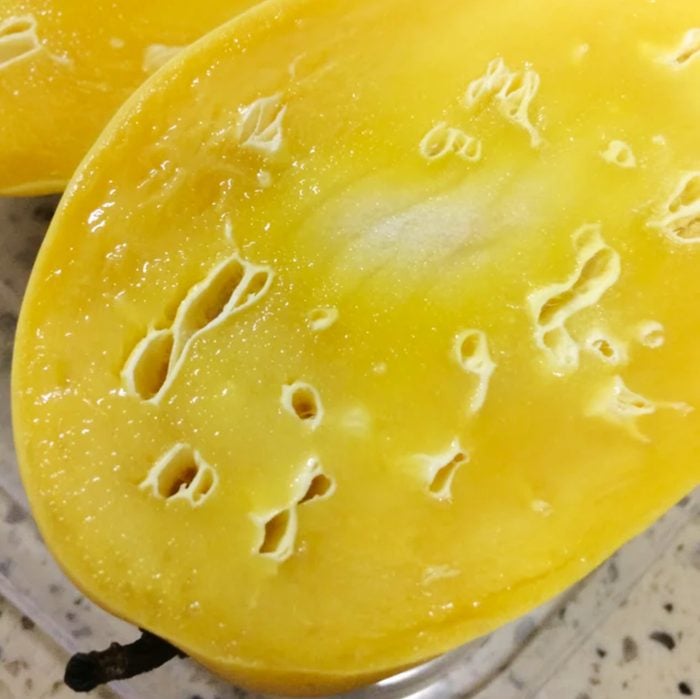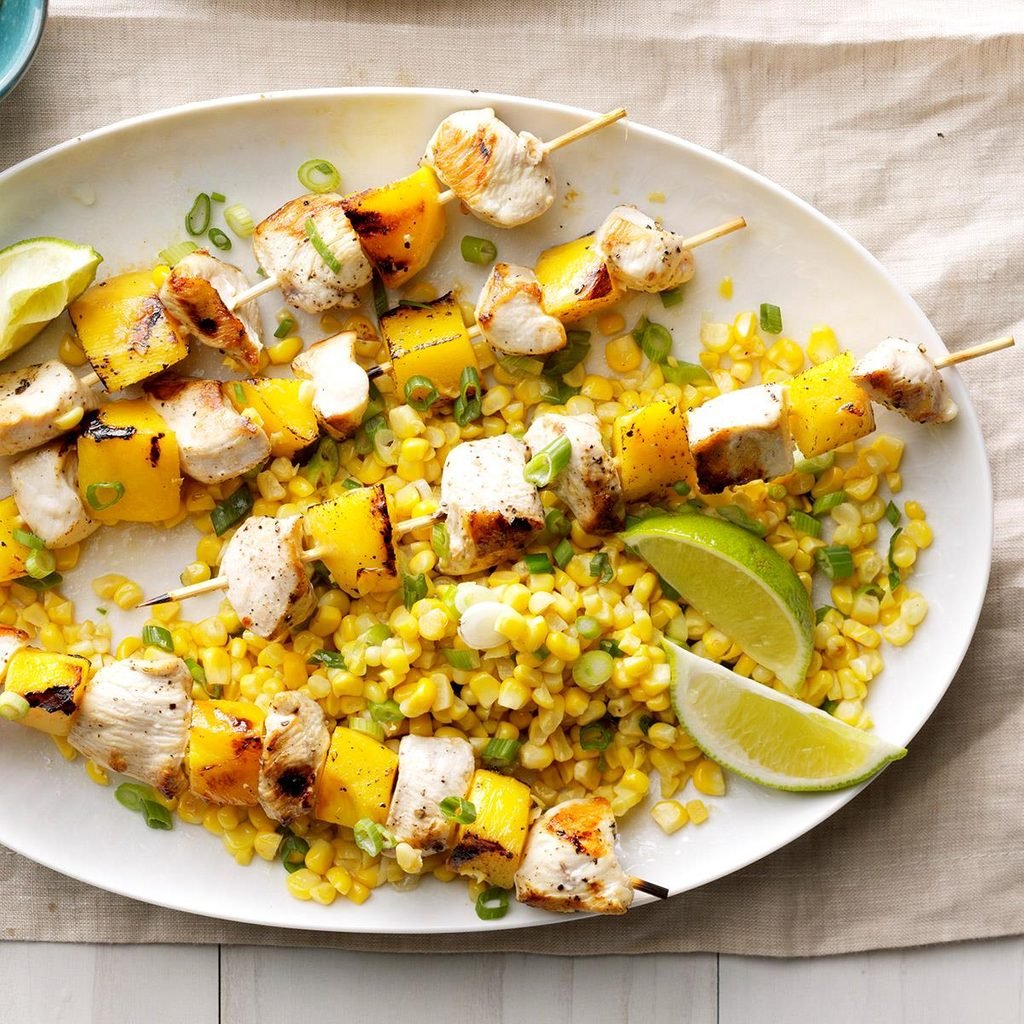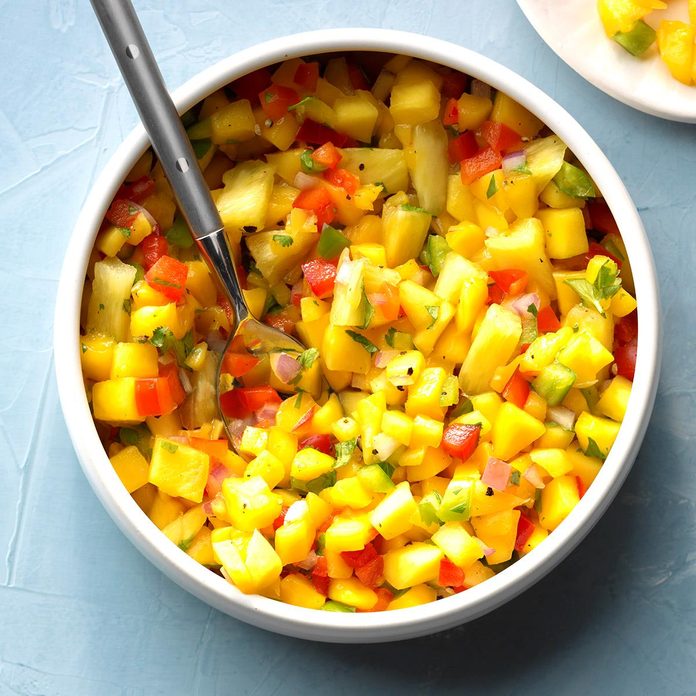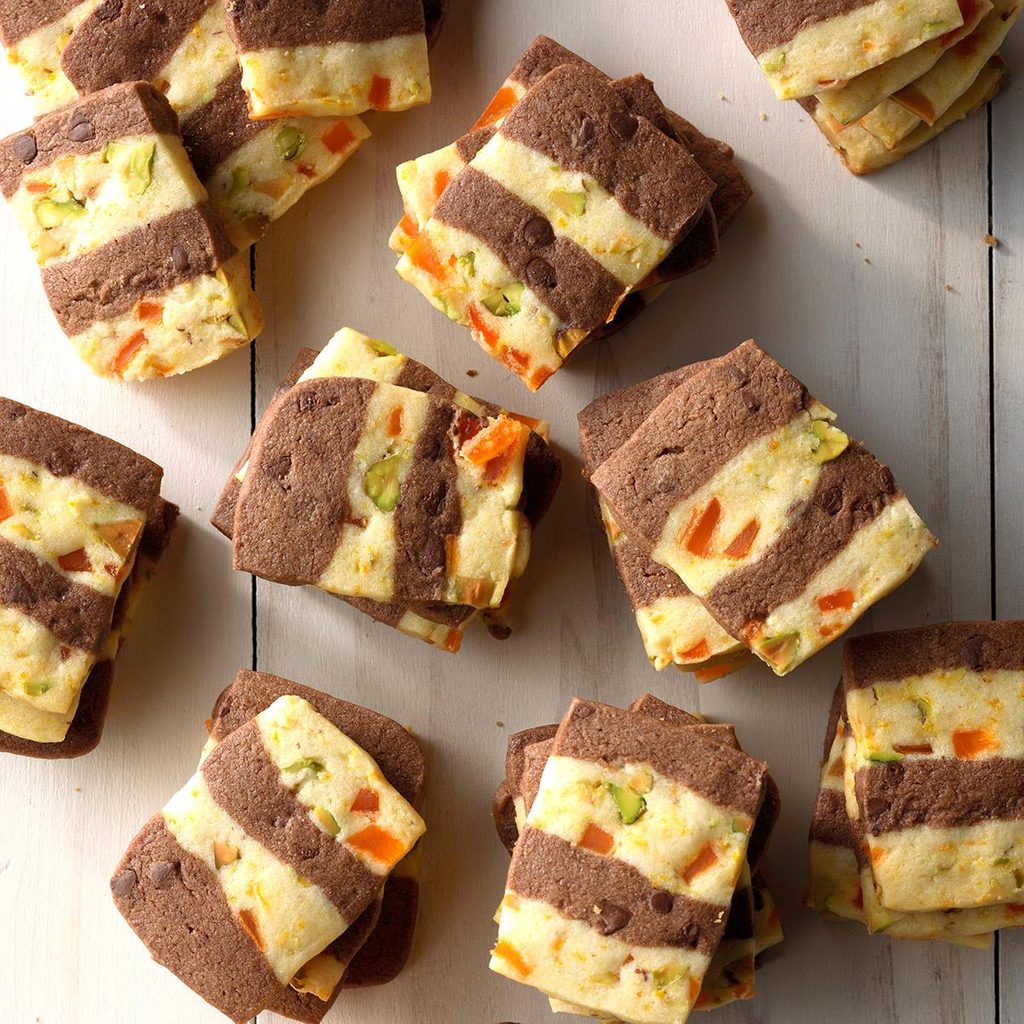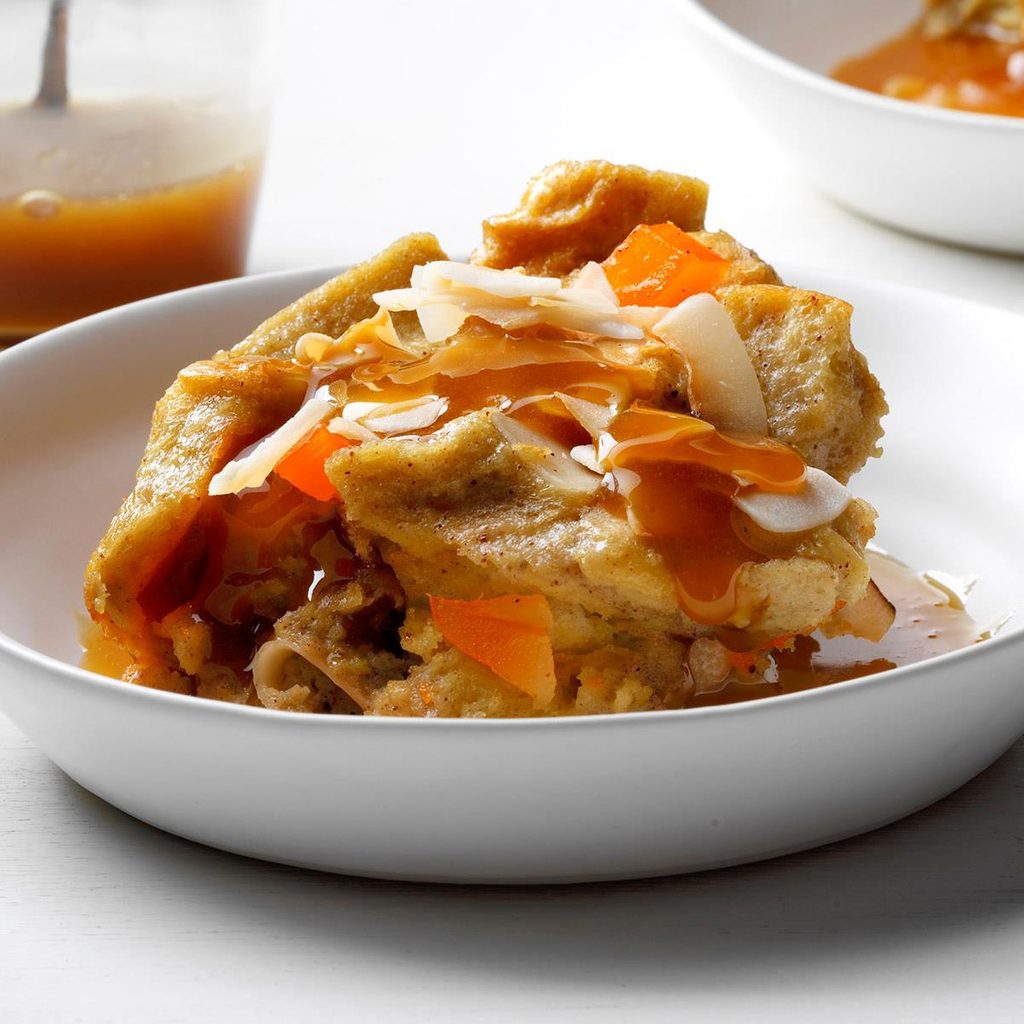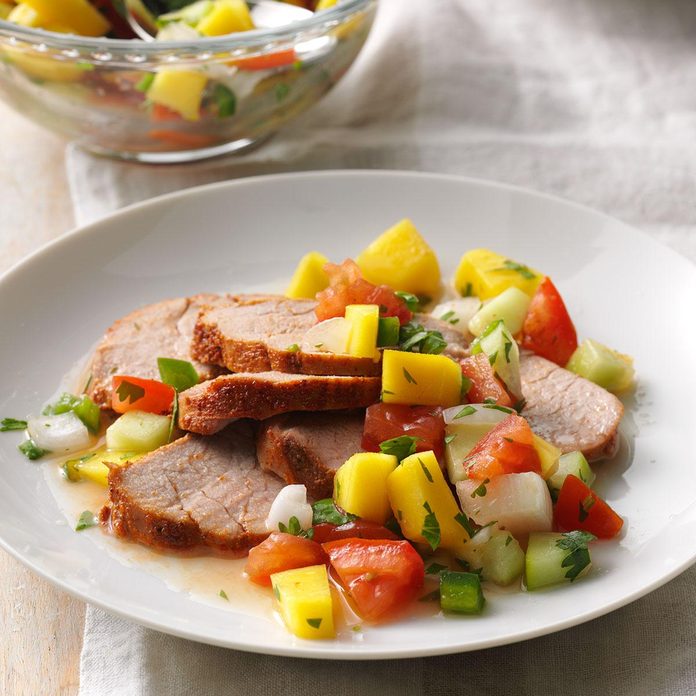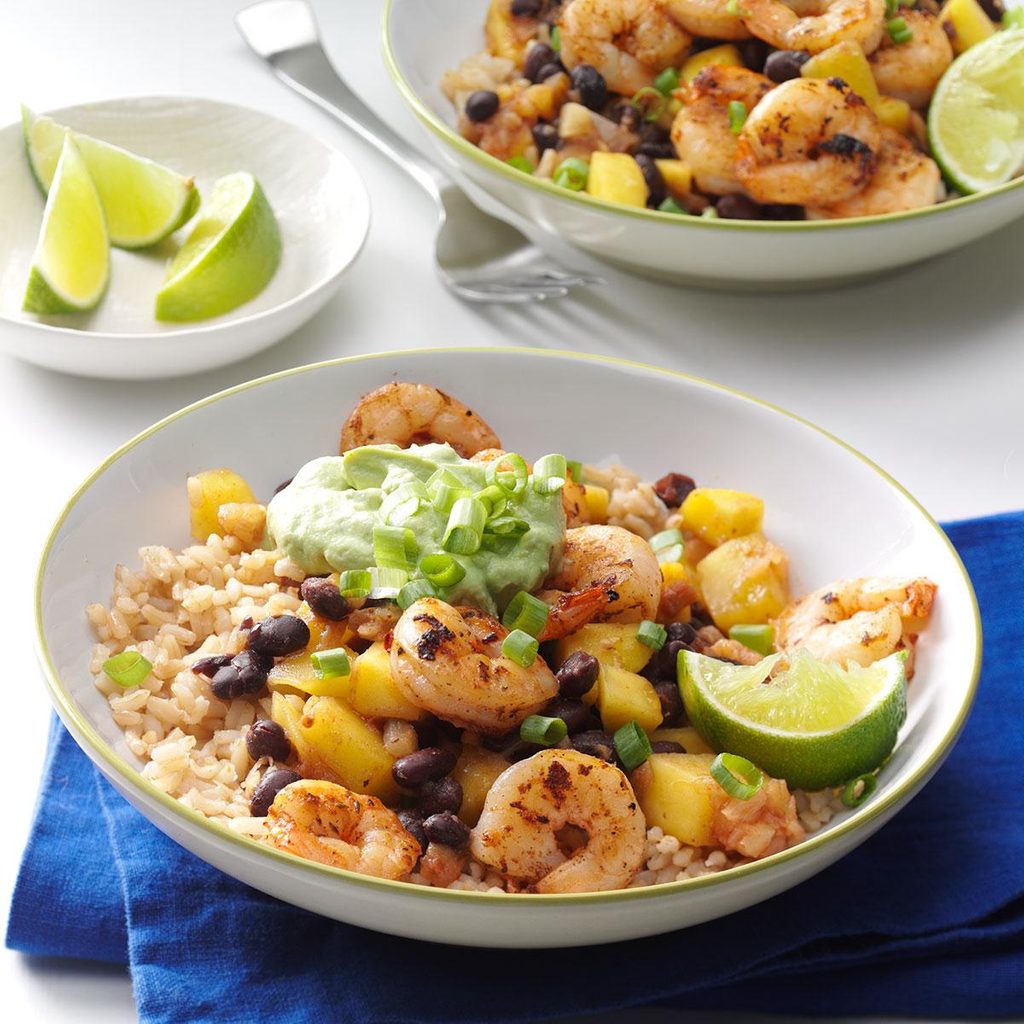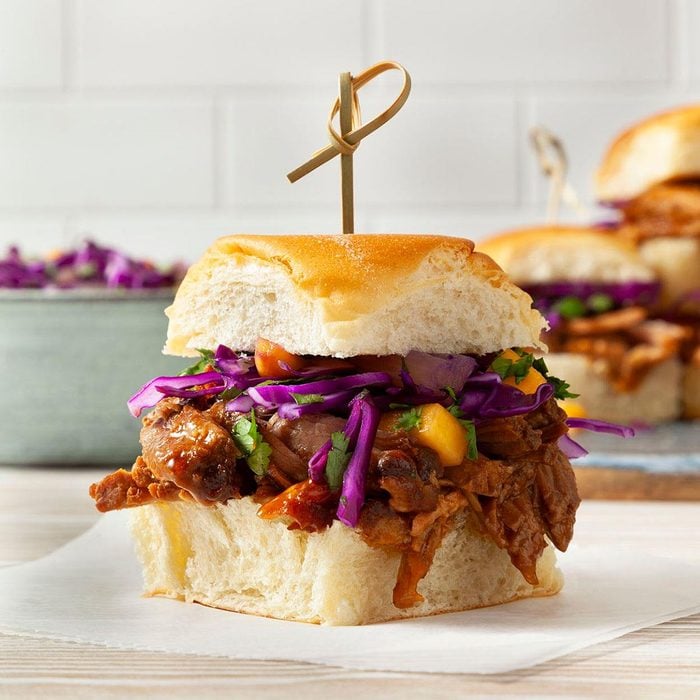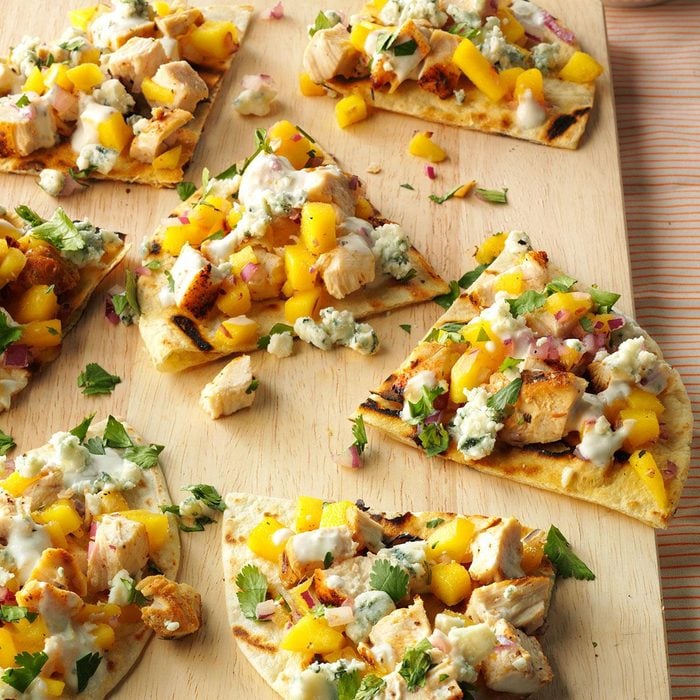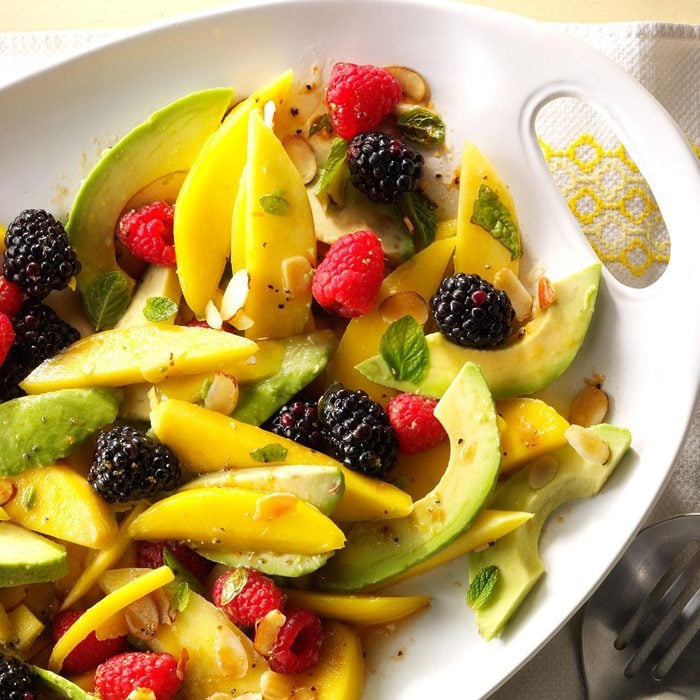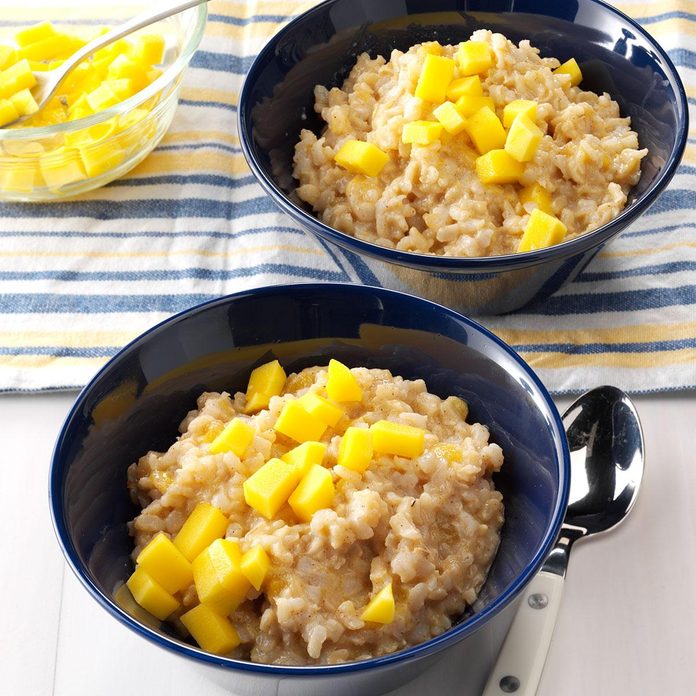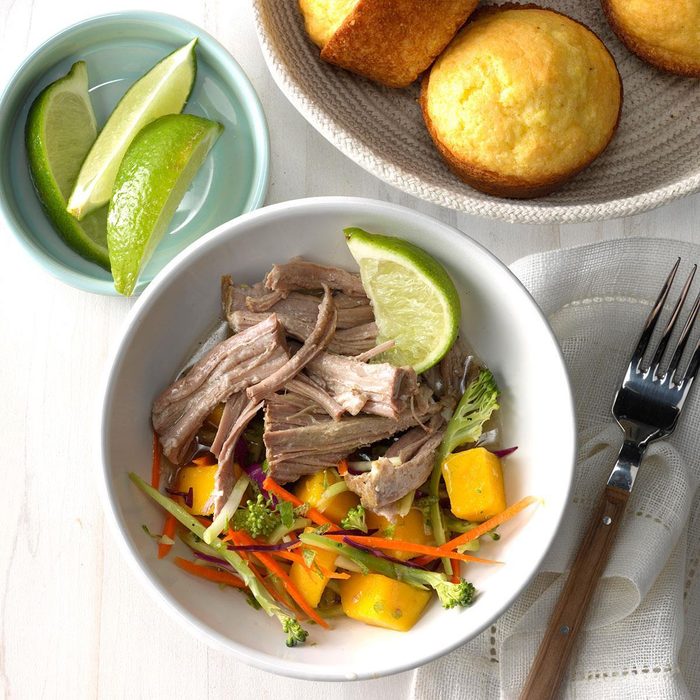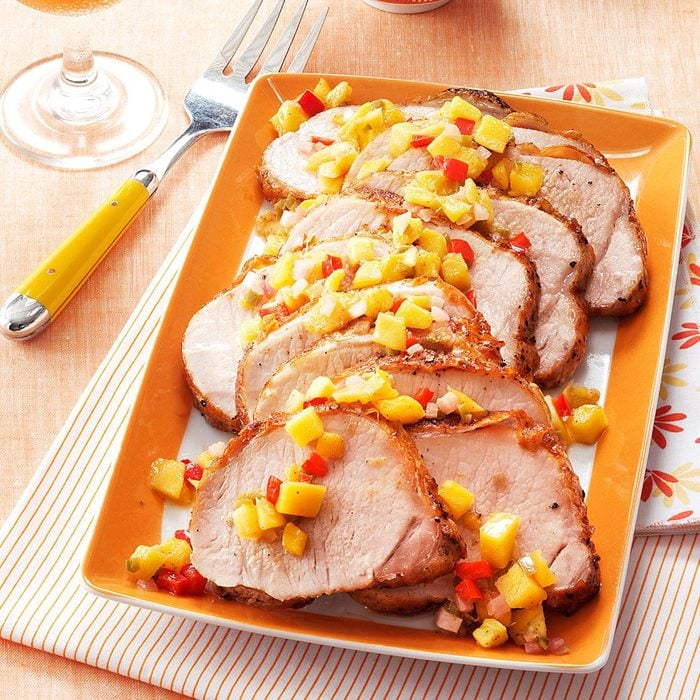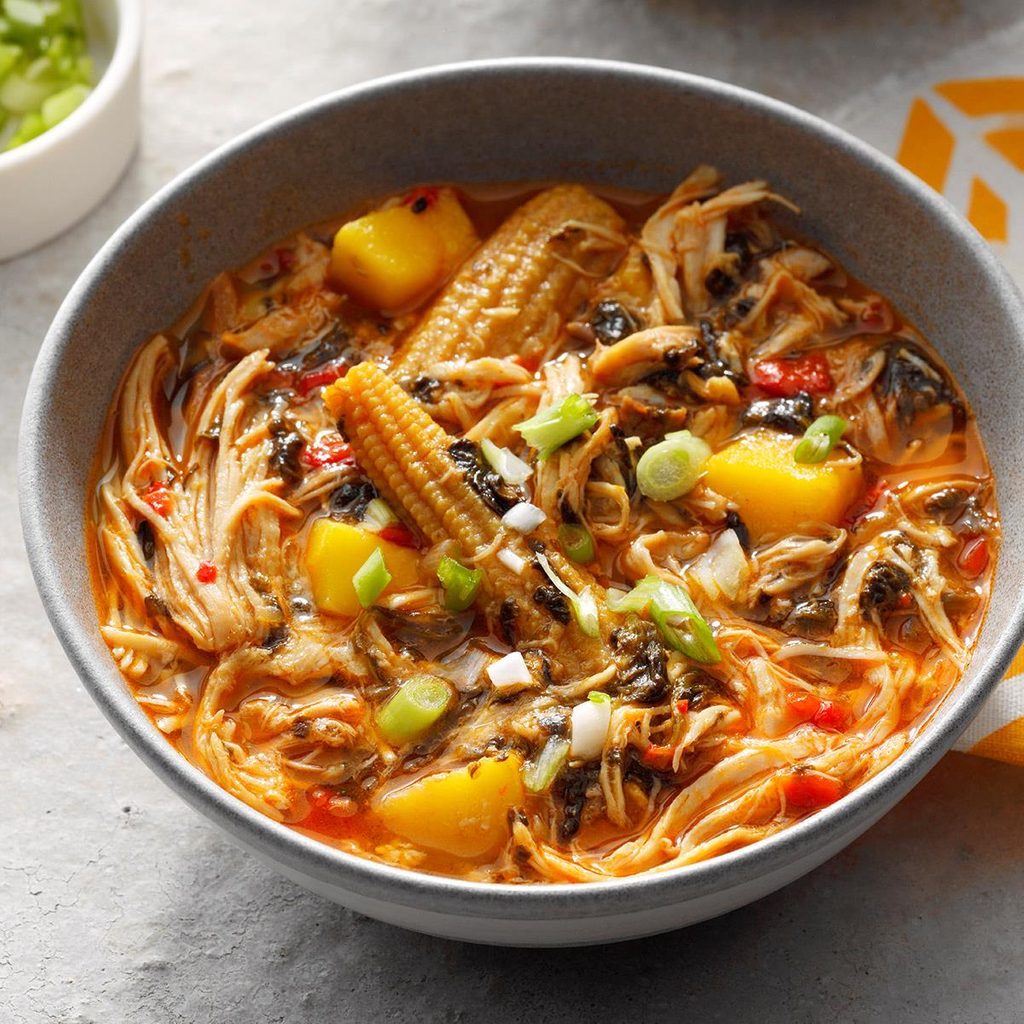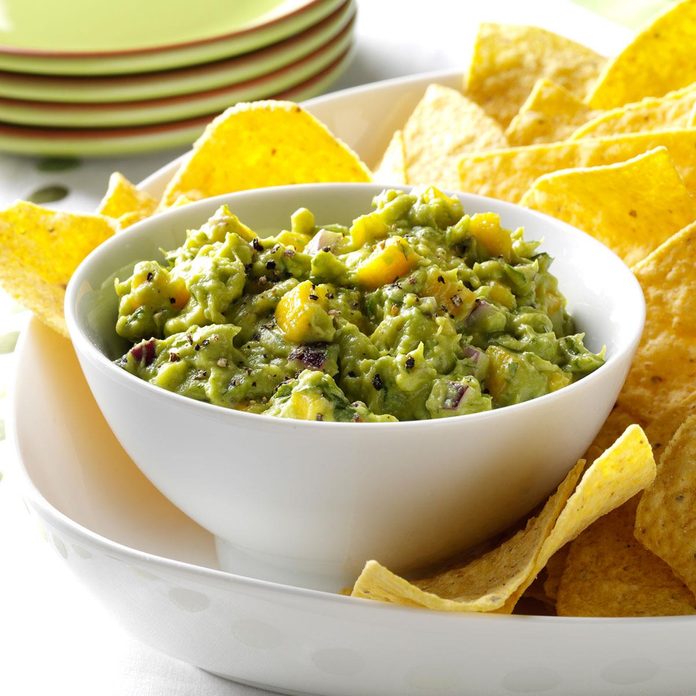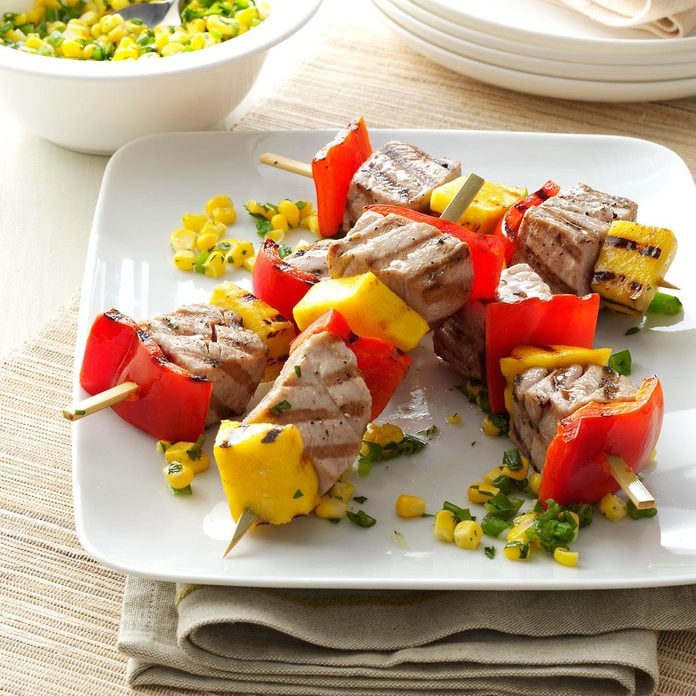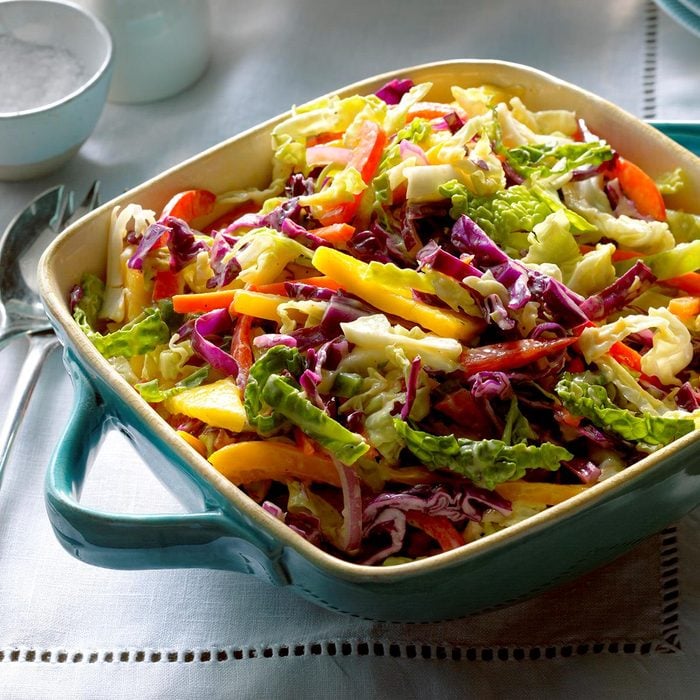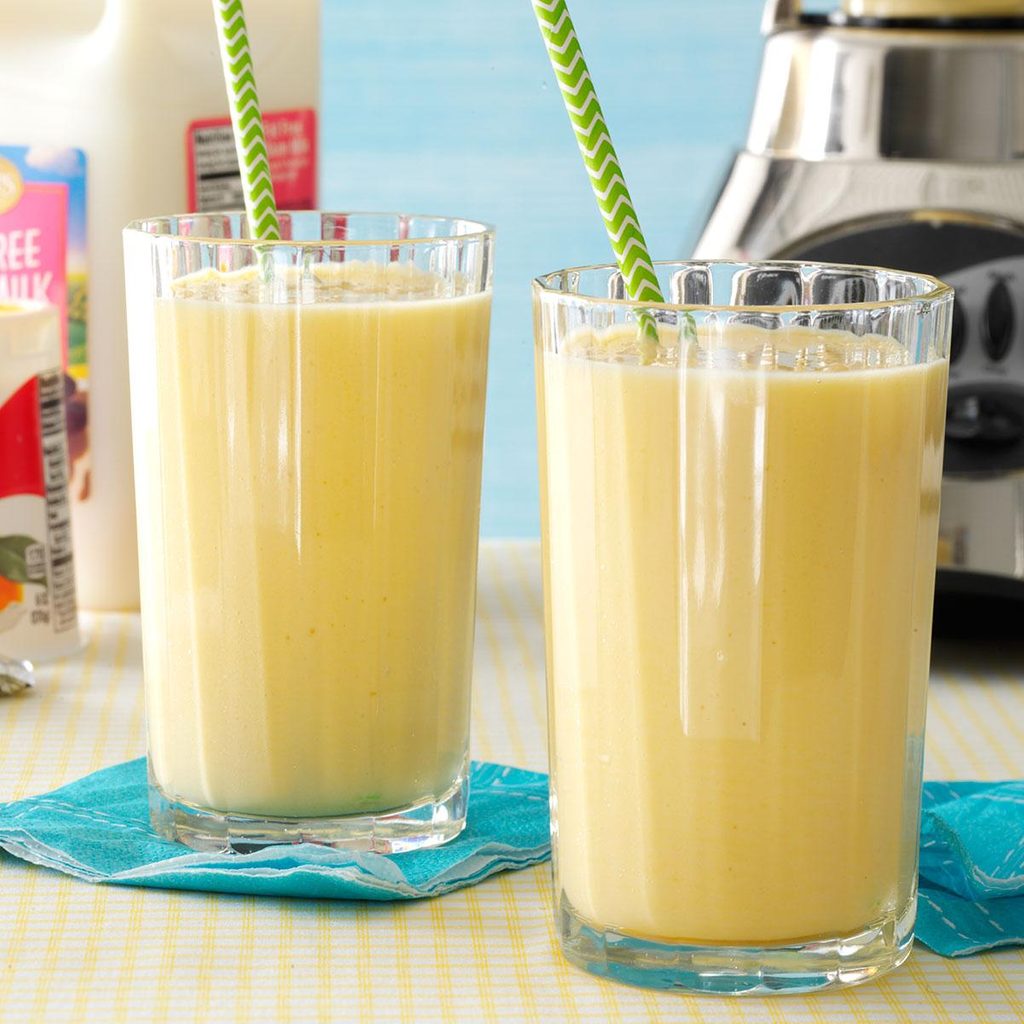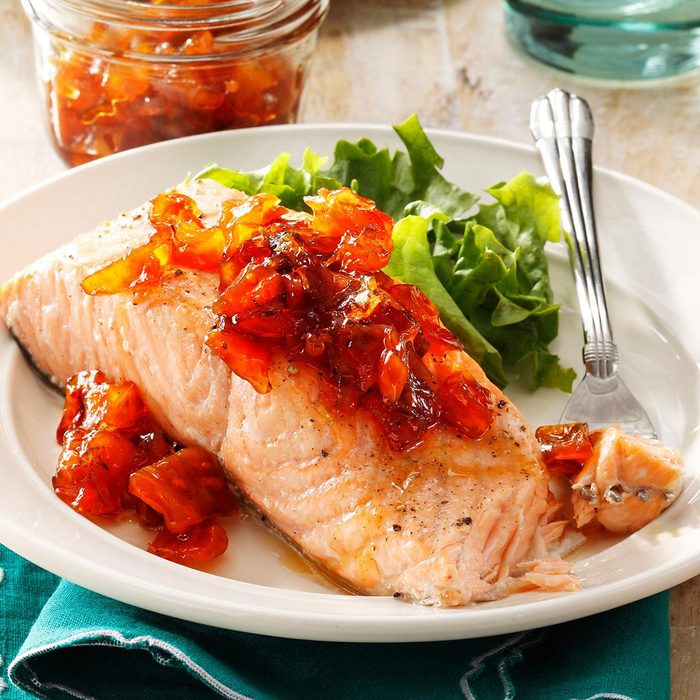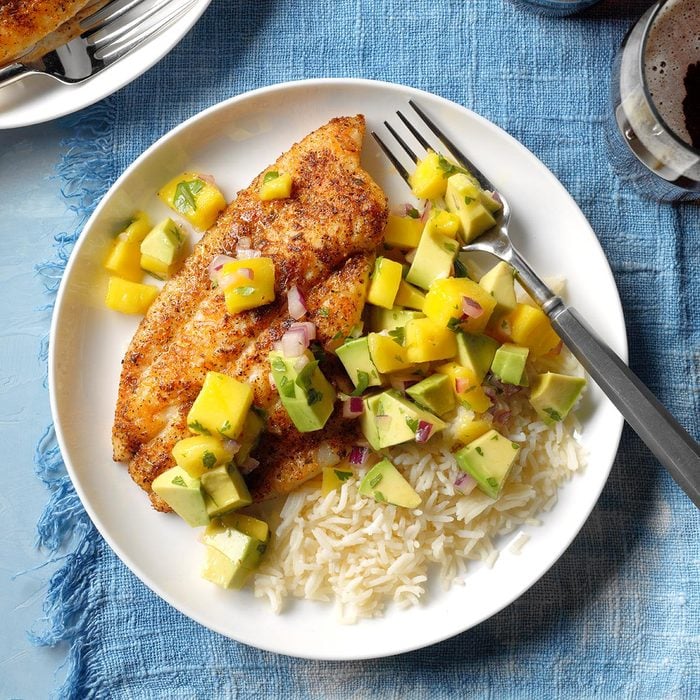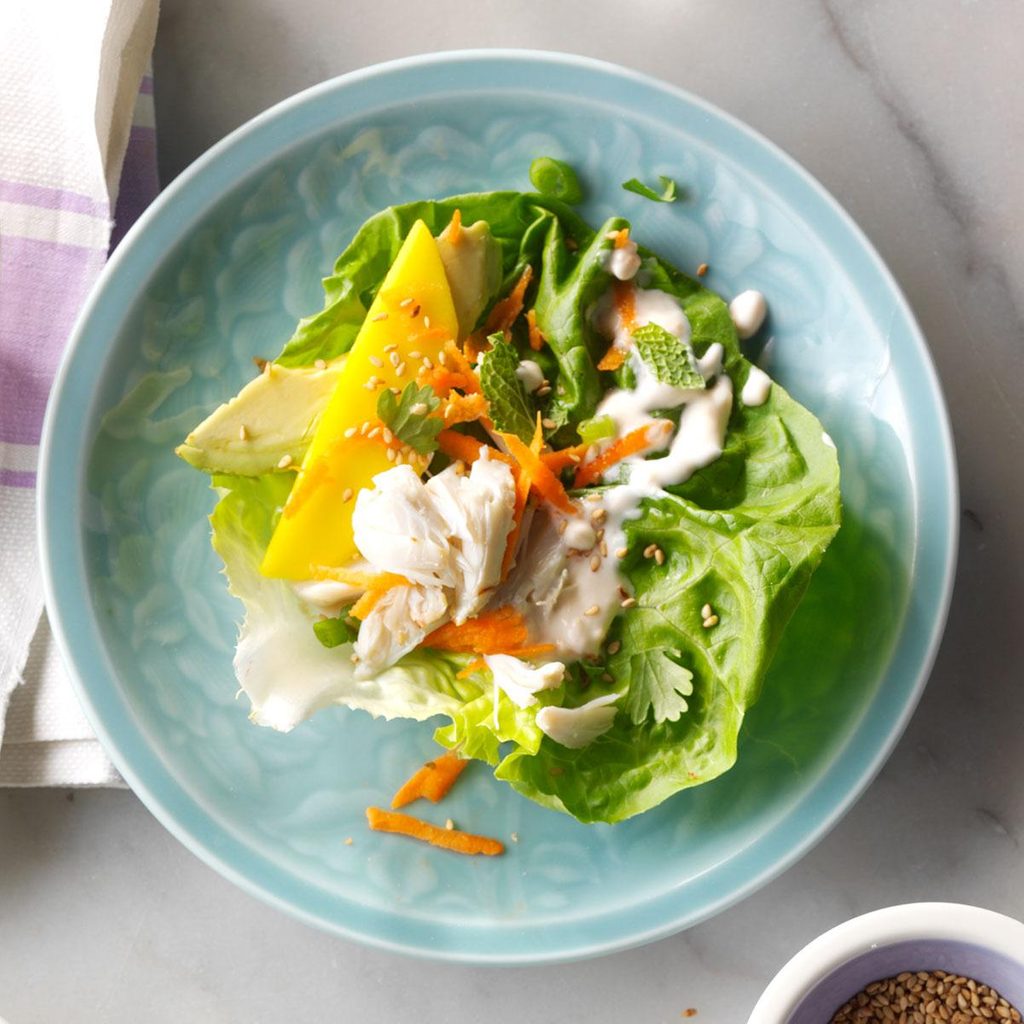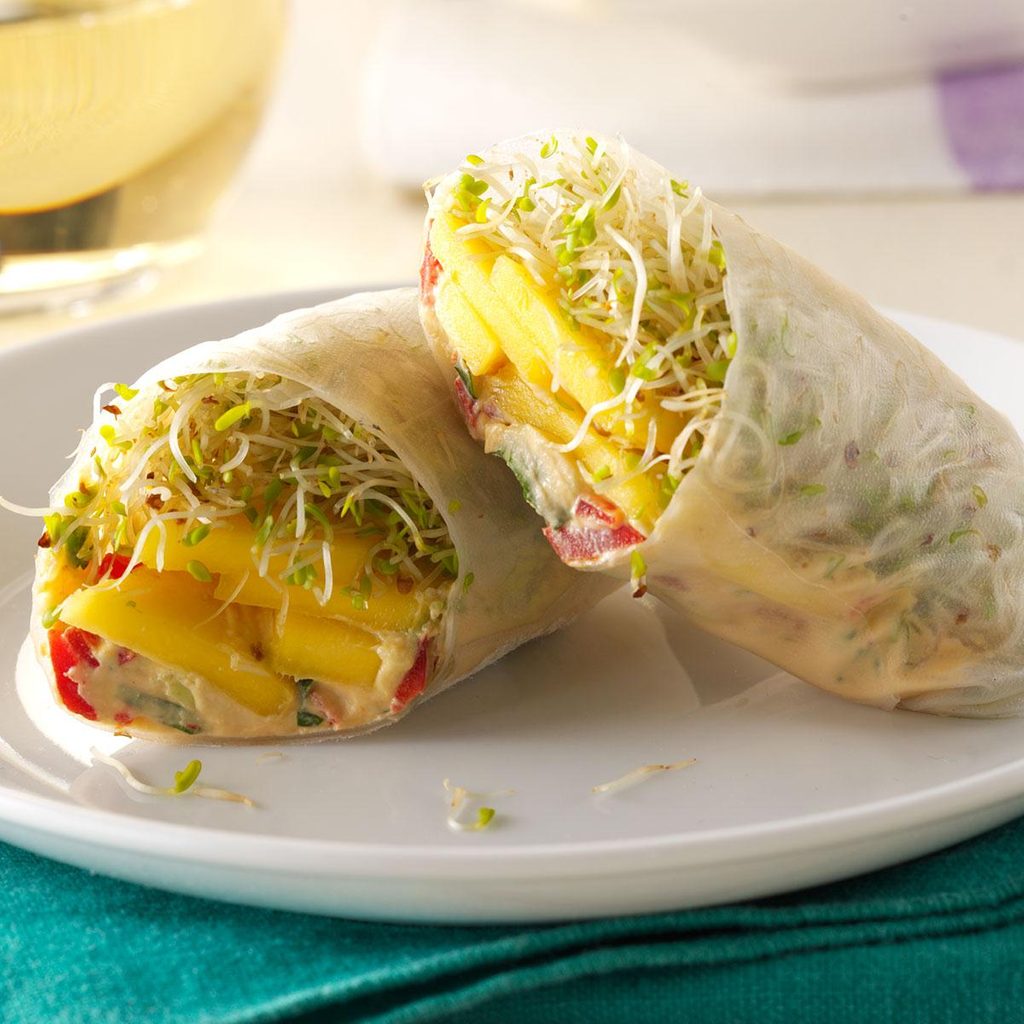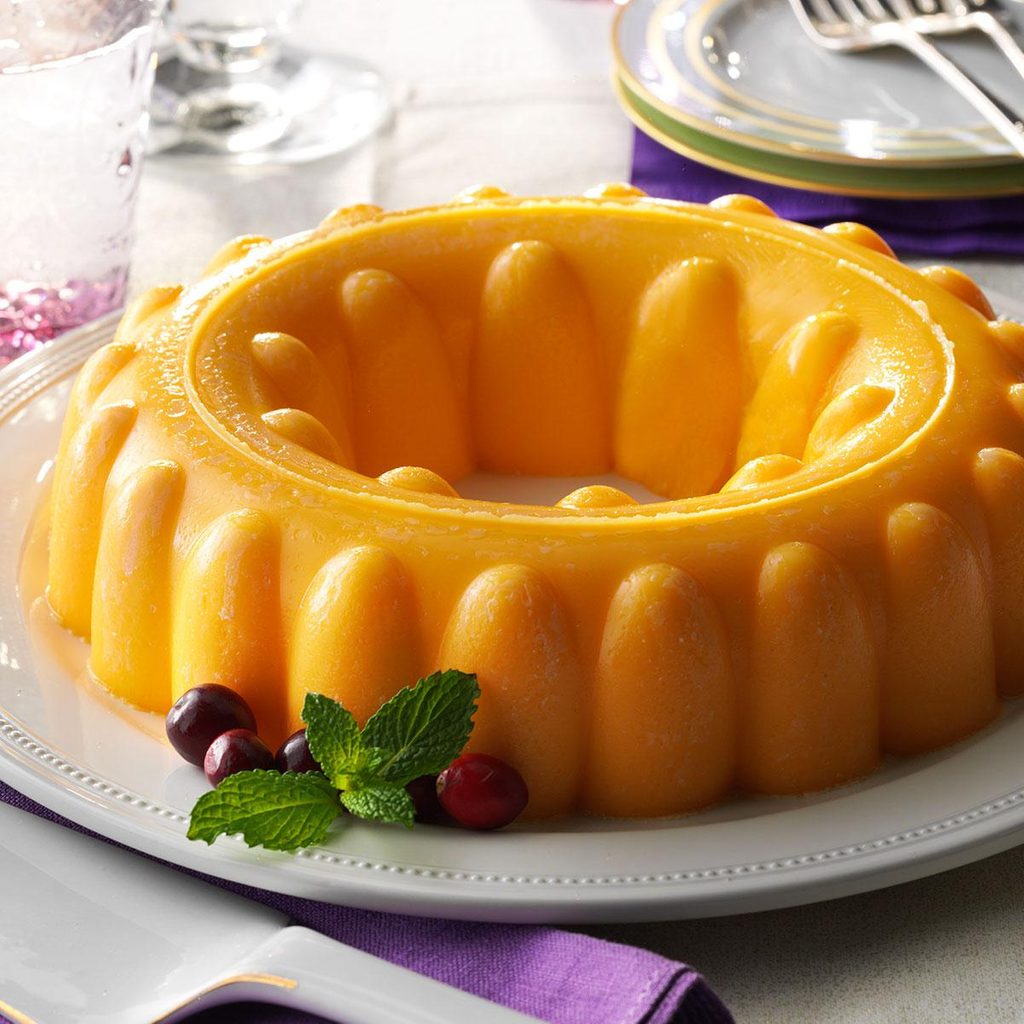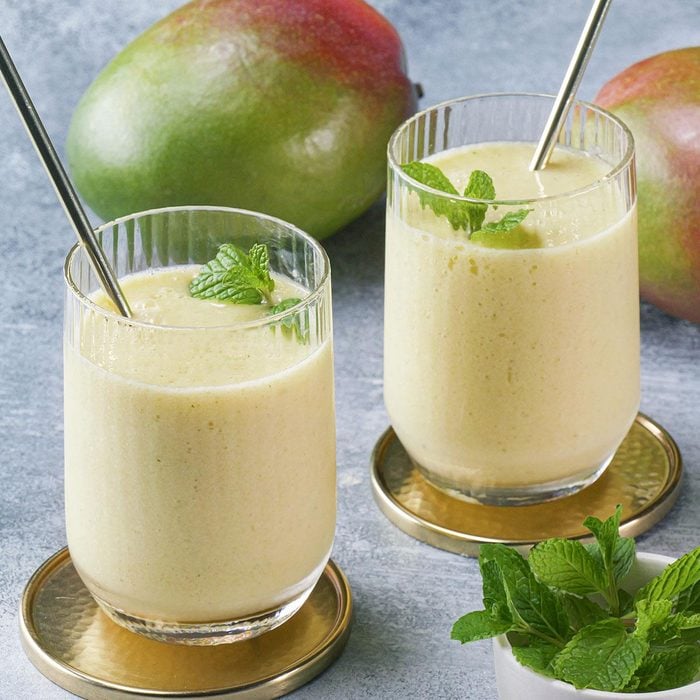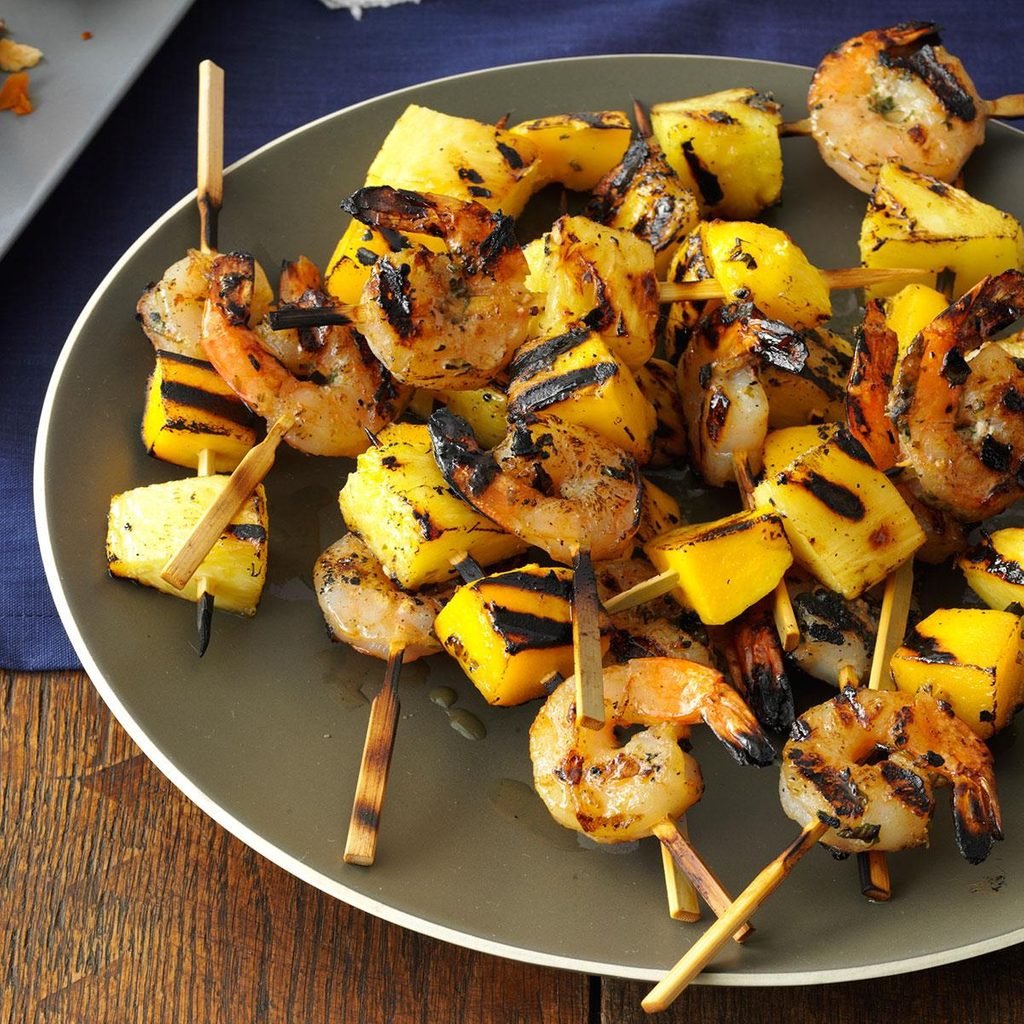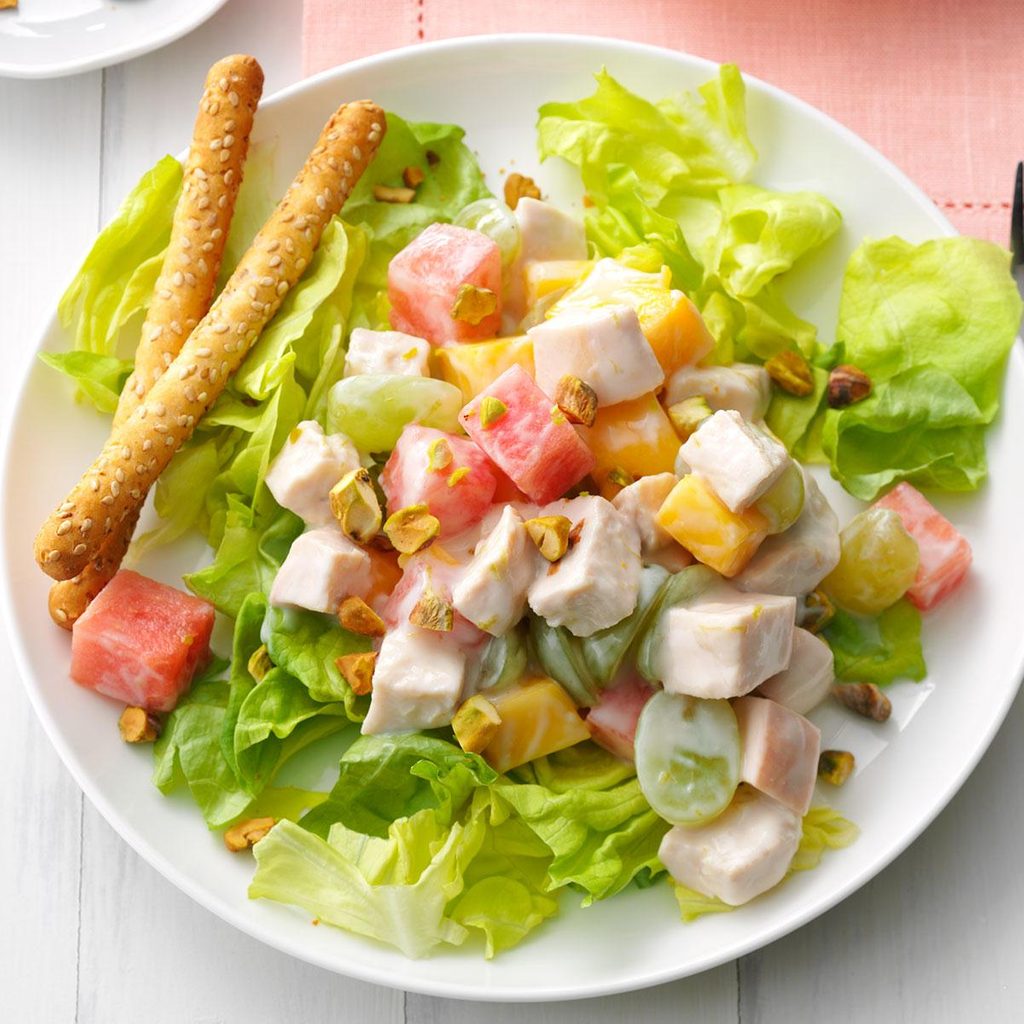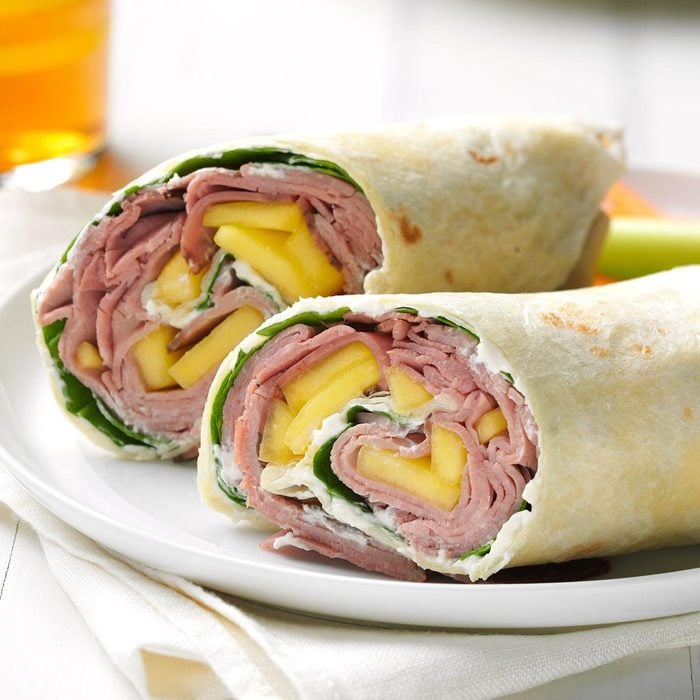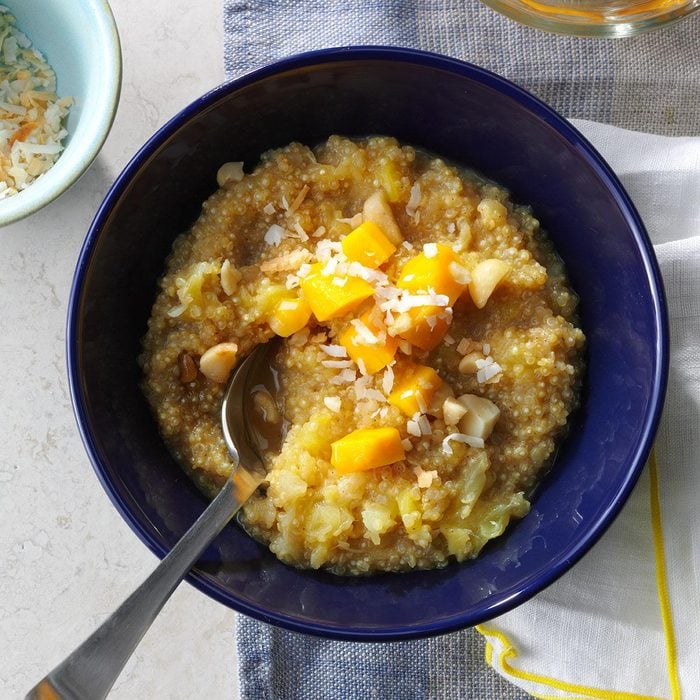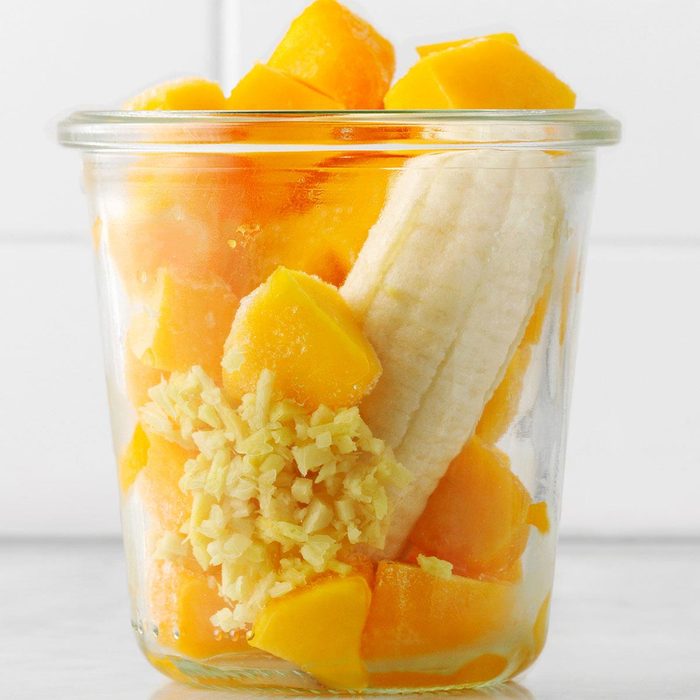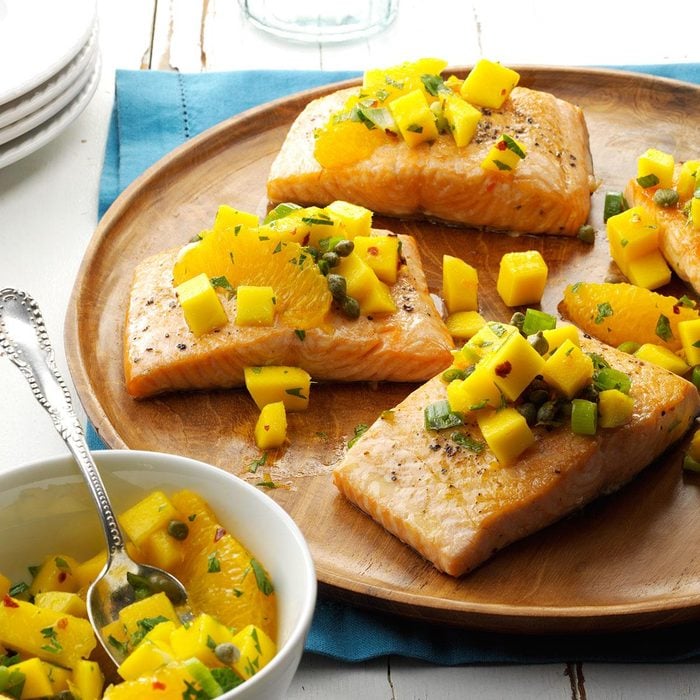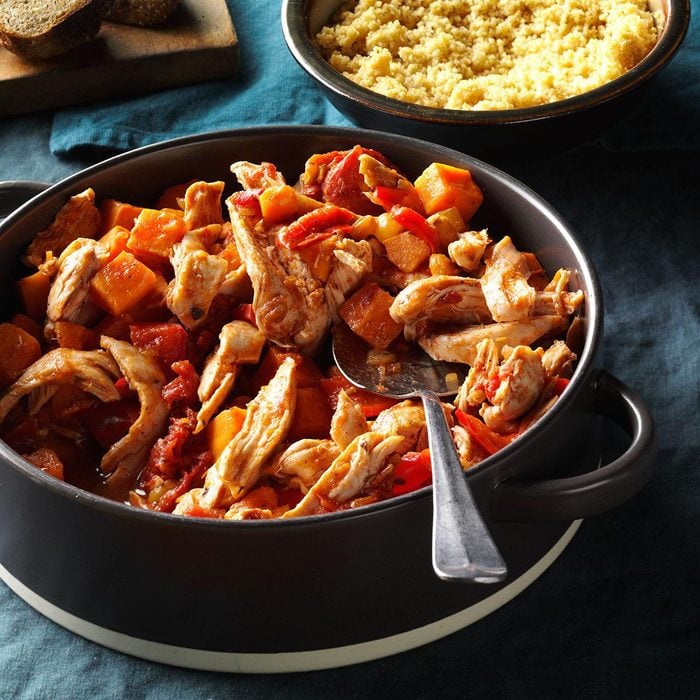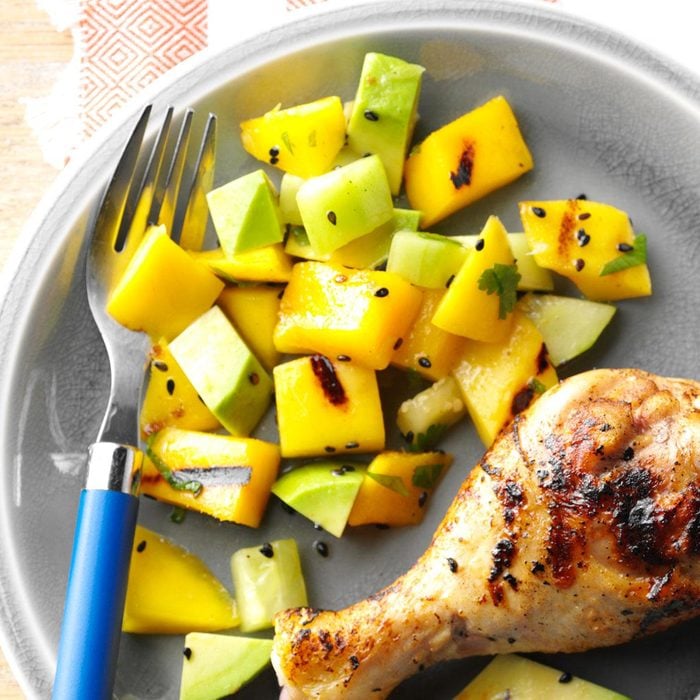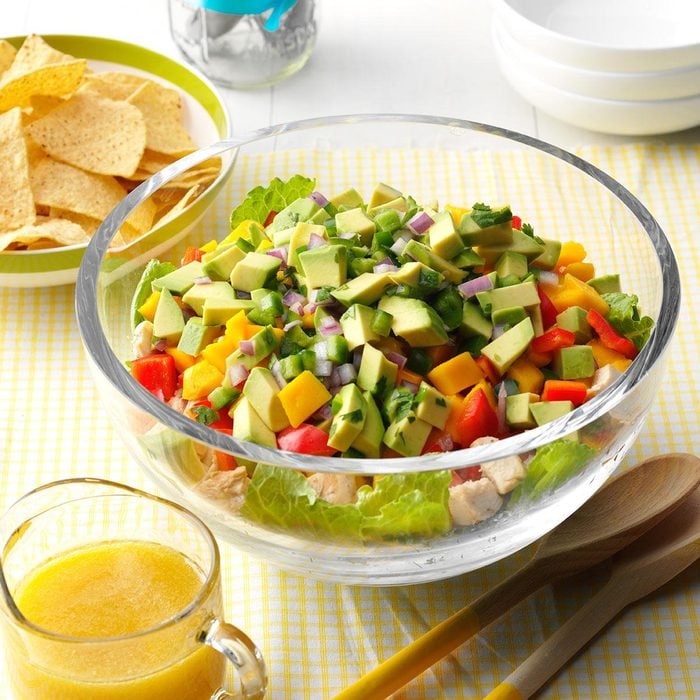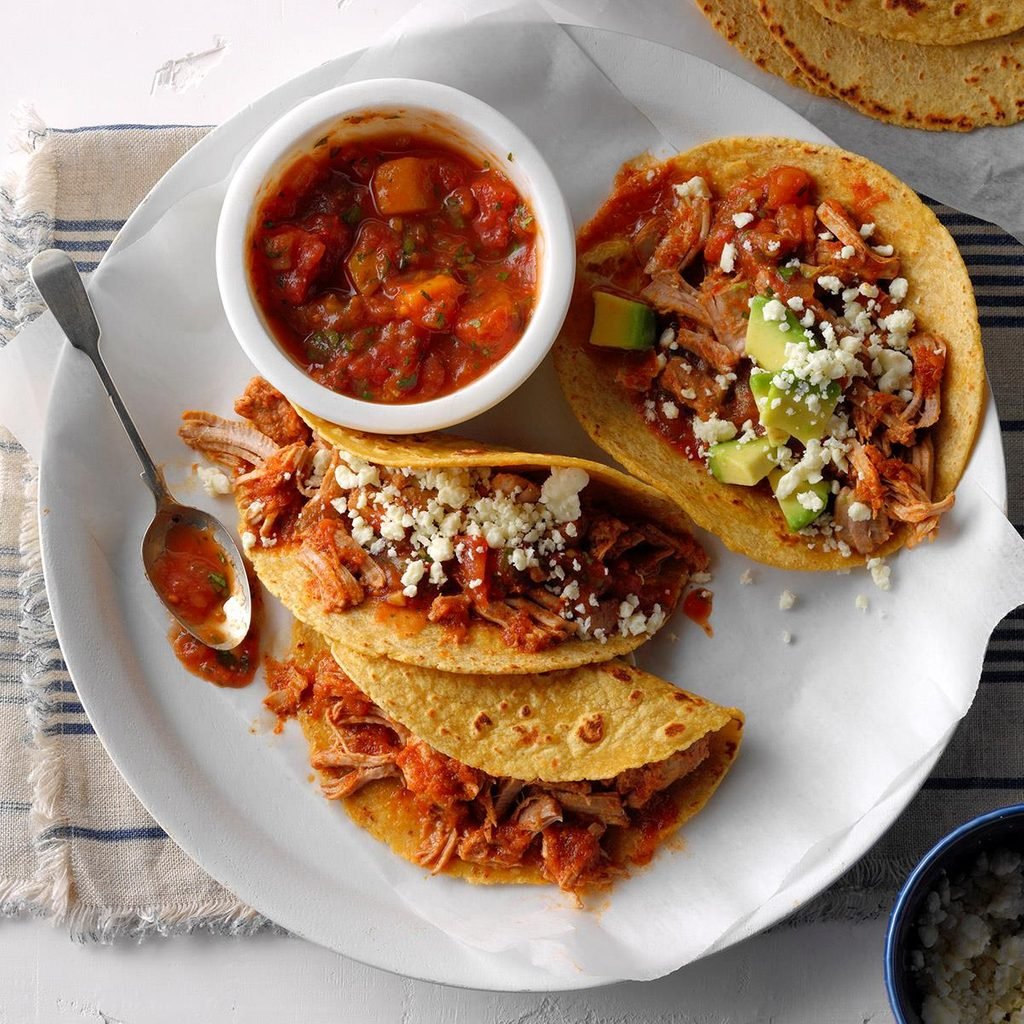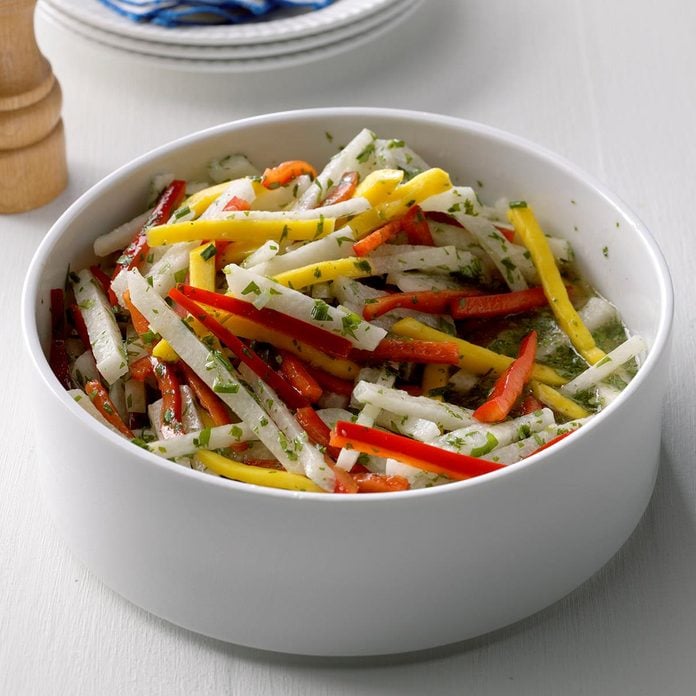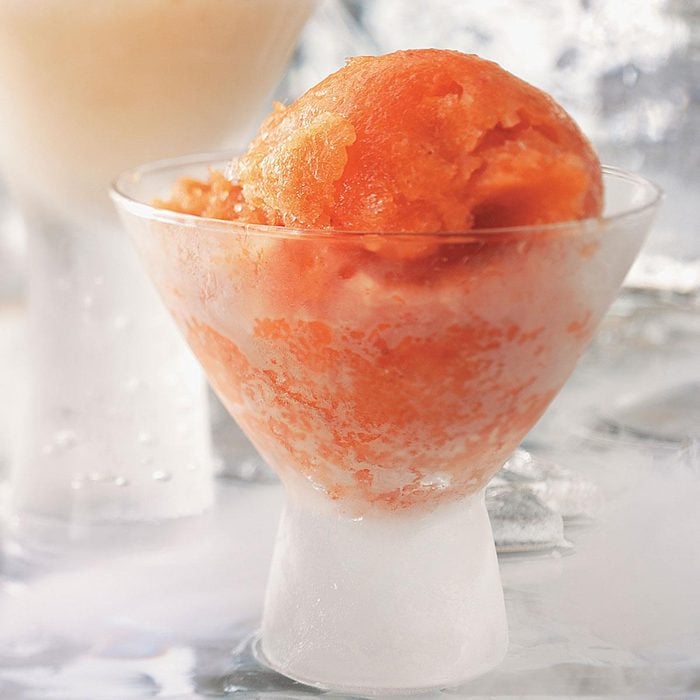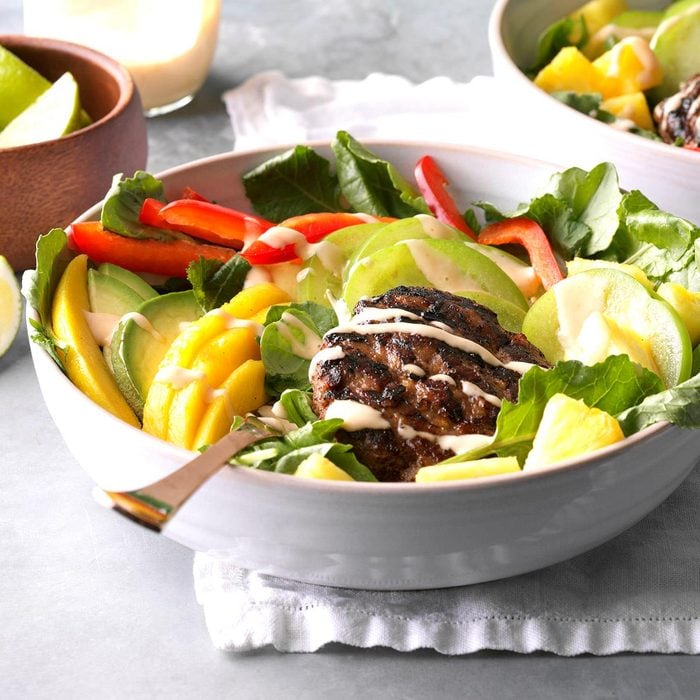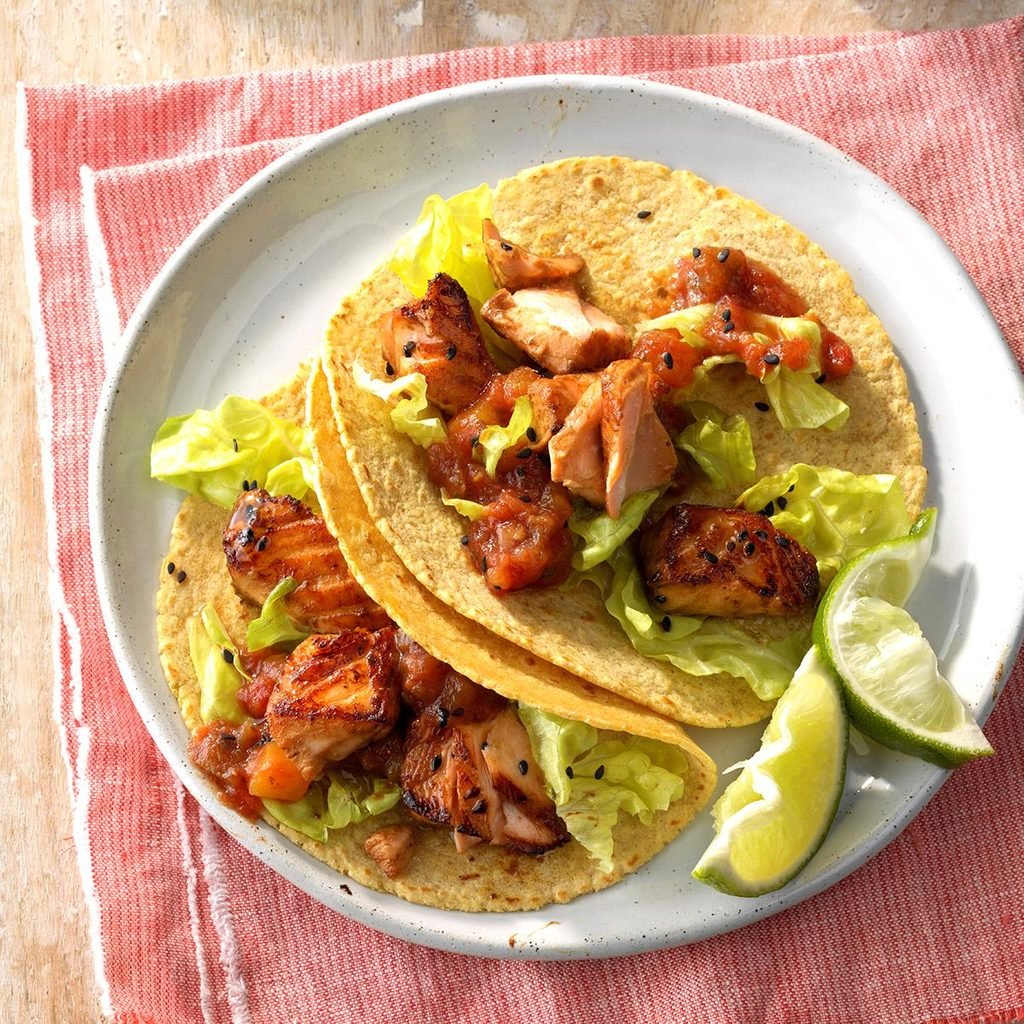Mangoes were never a big part of my childhood. I hadn’t even had one until my friend introduced me a few years ago—boy, was I missing out. Nothing beats a freshly cut mango with a squeeze of lime and some Tajin. Favorite summer snack unlocked!
That doesn’t mean mangoes don’t have the occasional imperfection, though. You may have seen white spots on mango skin before and been confused. Is the fruit still safe to eat? Here’s what you need to know.
What Are the White Spots in My Mango?
While we wish every fruit we cut into was the cream of the crop, it doesn’t always happen that way. Mangoes have a solid pit in the middle and can be difficult to cut properly. And the last thing we want to see after struggling to peel our tropical fruit is weird little white spots all over! What’s up with that?
It has to do with the initial harvesting process. After mangoes are picked, they’re then sent to a 115°F hot water bath to kill any potential fruit flies or larvae on the fruit. They sit in this water for about an hour. However, if a mango hasn’t yet matured, the hot water can confuse the fruit. The mango’s metabolism begins to speed up and causes fermentation due to the lack of oxygen, thus generating alcohol and carbon dioxide.
The carbon dioxide has nowhere to escape, so it starts to create little white pockets in the flesh of the fruit.
Is It Safe to Eat?
Thankfully, yes. However, it’s probably not going to be the greatest mango you ever tasted. The hot water also stops the mango from ever reaching its full, fruity potential and instead leaves it somewhere in mediocre-land. But it’s still edible. If you don’t want to waste it, try mixing it into something like a mango salsa or cowboy caviar. Here’s the recipe for cowboy caviar.
Our Absolute Best Mango Recipes
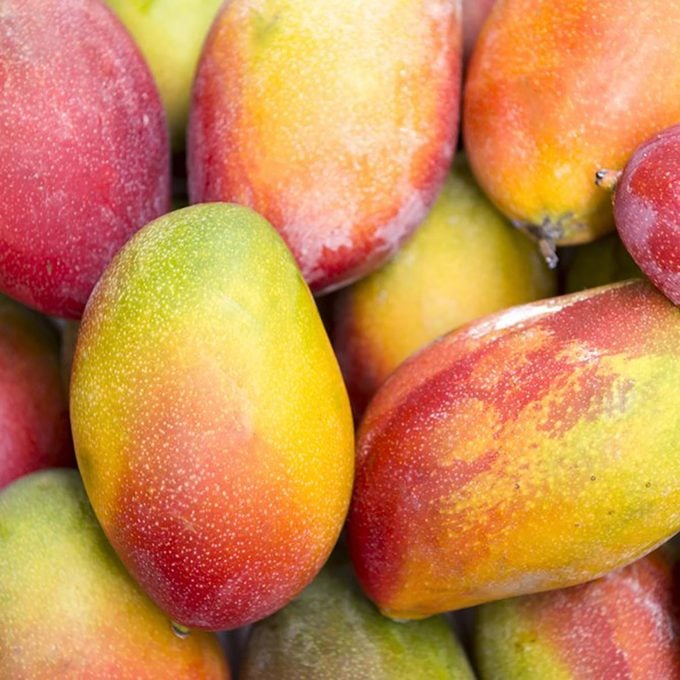 lazyllama/Shutterstock
lazyllama/Shutterstock
Mangoes are the most widely consumed fruit in the world! This sweet fruit has been cultivated in India and South Asia for 4,000 years, and is now common in grocery stores across America. Not only is this juicy fruit delicious, it's loaded with vitamins C, A and B6, and is
good for your heart, eyes and even helps your complexion. Keep clicking for some amazing ways to eat mango!
Grilled Chicken and Mango SkewersThe inspiration for this recipe came from the charbroiled chicken skewers I used to enjoy while strolling along Calle Ocho in Miami on Sunday afternoons. Feel free to garnish them with sesame seeds or spritz them with fresh lime juice. —Wolfgang Hanau, West Palm Beach, Florida
Tropical French ToastWeekends are hectic in my house and we rarely find time to have breakfast together. When I make this special French toast on a Saturday morning, my boys are more than happy to help in the kitchen and eat together!—Amie Carlock, Brick, New Jersey
Pepper Mango SalsaWhenever I make this, the bowl is always left empty! The idea for a homemade mango sauce hit me after I saw a chef on television make something similar. It sounded so good, and it wasn't something I could find in a store at the time. The salsa is especially tasty served with artisan chips —the black bean and roasted garlic ones are my favorite. When strawberries are in season, I add them into the mix, too. —Wendy Rusch, Cameron, Wisconsin
Mango Fudge Refrigerator Ribbon CookiesI’ve always thought that a ribbon cookie is especially nice. Although it’s a single cookie, it really seems like two or three different cookies because of its lovely layers of flavor. These refrigerated ribbon cookies have a rich chocolate layer balanced by a bright orange-mango layer—a very special combination. —Jeanne Holt, Mendota Heights, Minnesota
You can also try this no-bake sweet mango delicacy- mango delight!
Coconut Mango Bread Pudding with Rum SauceAll the fun flavors of Puerto Rico come together in a dessert that's both exotic and familiar. Topped with a brown sugar rum sauce, it's even better with vanilla ice cream or whipped cream. —Jennifer Jackson, Keller, Texas
Pork Tenderloin with Mango RelishColorful mango relish is a refreshing counterpoint to the “heat” in the meat rub I use to pep up a number of pork dishes. These roasted tenderloins are sure to turn out nice and juicy. —Gloria Bradley, Naperville, Illinois
Caribbean Shrimp & Rice BowlI had a similar rice bowl on vacation and re-created this lighter version at home. It takes me back to the islands every time I make it. Try grilling the shrimp for more beachy flavor. —Lauren Katz, Ashburn, Virginia
Mango Pie with Coconut CrustThis was the first pie I created myself. Mangoes are one of my favorite fruits, and they deserve to be represented in a pie. Of course, everything is better with coconut. —Jennifer Worrell, Niles, Illinois
Caribbean Chipotle Pork SlidersOur favorite pulled pork sliders combine the heat of chipotle peppers with a cool tropical coleslaw. The robust flavors make these a big hit with guests. —Kadija Bridgewater, Boca Raton, Florida
Grilled Chicken, Mango & Blue Cheese TortillasHere's a fantastic outdoor appetizer to kick-start your summer get-togethers. We double or triple the ingredients when we host parties. —Josee Lanzi, New Port Richey, Florida
Avocado Fruit Salad with Tangerine VinaigretteOn long summer days when we just want to relax, I make a cool salad with avocado, berries and mint. The tangerine dressing is refreshingly different. —Carole Resnick, Cleveland, Ohio
Mango Rice PuddingMangoes are my son's favorite fruit, so I was ecstatic to incorporate them into a healthy dessert. You can also use ripe bananas instead of mango, almond extract instead of vanilla or regular milk in place of soy. —Melissa McCabe, Victor, New York
Conga Lime PorkDinner guests won’t be too shy to get in line when this yummy chipotle pork moves to the buffet table. —Janice Elder, Charlotte, North Carolina
Mango Chutney Pork RoastBright mango and red bell pepper really liven up this roast. The tropical fruit chutney packs a nice punch. Make an extra batch for tacos the next night. —Pamela Vitti Knowles, Hendersonville, North Carolina
Mango & Coconut Chicken SoupI love preparing dinner in a slow cooker because it's "carefree cooking." This chicken dish uses ingredients that I love, such as coconut milk, edamame and fresh ginger. The Asian-style entree is perfect for a potluck party. —Roxanne Chan, Albany, California
Mango GuacamoleI needed a change from the standard guacamole recipe, so I added mango for more sweetness. It really complements the heat from the chili pepper, and it looks beautiful, too! —Adam Landau, Englewood Cliffs, New Jersey
Peppered Tuna KabobsWhen we barbecue, we like to wow our guests, so dogs and burgers are out! We make tuna skewers topped with salsa—the perfect easy recipe. My five kids like to help me put them together. —Jennifer Ingersoll, Herndon, Virginia
Island Mango SlawThe cooling effect of tropical fruit and Greek yogurt meets jalapeno spice in this snappy mango slaw. To ensure ripeness, you may want to buy your mango a day or two ahead. —Jenn Hall, Collingswood, New Jersey
Mango-Peach SmoothiesThis is my toddler son's favorite breakfast—he'll take one of these over pancakes any day! Get creative when mixing fruits and fruit-flavored yogurts; we love peach yogurt with mango, strawberry yogurt with blueberries or pina colada yogurt with mango and banana. —Dana Herra, DeKalb, Illinois
Jerk-Spiced Mango Pineapple ChutneyI grew up eating mango, pineapple and spicy food, so enjoy the combination of these flavors. I try to make this chutney during the summer when the fruit is most flavorful and affordable. It's fine to adjust the spiciness according to your liking. You can serve this with any meat, but also with fish, such as salmon.—Sugiyarti Jorgenson, Kodiak, Alaska
Blackened Catfish with Mango Avocado SalsaA delightful and tasty rub makes this quick recipe fantastic. While the fish is sitting to allow the flavors to blend, you can easily assemble the salsa. My family loves this! —Laura Fisher, Westfield, Massachusetts
Crab Louie Lettuce WrapsParty guests can mingle and enjoy these tasty portable lettuce wraps without having to juggle plates and forks. — Michael Watz, Normal, Illinois
Mango Avocado Spring RollsAs a fan of mangoes and avocados, I love these wraps. You can substitute tortillas for rice paper wrappers, and lettuce or spinach for sprouts. —Gena Stout, Ravenden, Arkansas
Mango Gelatin SaladMy Aunt Nannette often made this salad as a convenient make-ahead dish. The mango mold has hints of apricot and can be served with pork, chicken and beef—or for dessert. —Debra Sult, Chandler, Arizona
Mango LassiLearn how to make mango lassi, the perfect summer drink any mango lover will love. Mango lassi is a sweet and refreshing treat only needs 6 ingredients! —Namrata Telugu, Terre Haute, Indiana
Hot Dog Sliders with Mango-Pineapple SalsaFor parties, we shrink down lots of foods, including these quick hot dogs, to slider size. Pile on the easy but irresistible fruit salsa for a burst of fresh flavor. —Carole Resnick, Cleveland, Ohio
Tropical Island Shrimp KabobsShrimp, mango and pineapple on skewers make a sunny presentation at parties. To boost flavors, we use a coconut milk, lime juice and cilantro marinade. —Mary Marlowe Leverette, Columbia, South Carolina
Pork & Mango Stir-FryA recipe is special when everyone in your family raves about it. My finicky eaters each give a thumbs-up for this hearty, nutty stir-fry. —Kathleen Specht, Clinton, Montana
Summer Splash Chicken SaladWhen it’s too hot to eat inside, I head out to the patio. Shred some rotisserie chicken and toss with mango, watermelon and grapes for an ooh-ahh healthy chicken salad. —Barbara Spitzer, Lodi, California
Tropical Beef WrapFor my finicky little ones, I create fast, tasty recipes like this tropical sandwich wrap. You can even use up leftover roast beef in a pinch. —Amy Tong, Anaheim, California
Tropical Quinoa Breakfast BowlI have been making this quinoa, coconut, pineapple and mango dish since I was in high school. To make it even more tropical, add some diced papaya.—Billy Hensley, Mount Carmel, Tennessee
Mango-Ginger SmoothiesI blend smoothies every morning and change the flavors. My favorite version features mango with a spicy bite of ginger. —David Lee, Irvine, California
Salmon with Mango-Citrus SalsaMy mother would make this for us on weeknights in summer—this was the only way we would eat fish. You can make the salsa a day ahead of time. Just keep it in the refrigerator in a covered container until ready to use. —Najmussahar Ahmed, Canton, Michigan
Harvesttime Chicken with CouscousEven on busy days, I can start this chicken in the slow cooker and still get to work on time. When I come home, I whip up a spinach salad and crescent rolls to round out the menu. —Heidi Rudolph, Oregon, Illinois
Grilled Mango & Avocado SaladA big hit with my family, this light salad is so easy to make! The healthy option of mango and avocado is simply the best combination you could serve. —Amy Liesemeyer, Tucson, Arizona
Tropical Layered Chicken SaladThis is a fresh and delicious recipe that is a big hit whenever I take it to a potluck—it's always the first to go! —Frances Pietsch, Flower Mound, Texas
Pork Tacos with Mango SalsaI've made quite a few tacos in my day, but you can't beat the tender filling made in a slow cooker. These are by far the best pork tacos we've had—and we've tried plenty. Make the mango salsa from scratch if you have time! Yum. —Amber Massey, Argyle, Texas
Shrimp in Mango Chili SauceOn-hand ingredients make a tasty shrimp entree in a matter of minutes! Try the shrimp over waffles or rice for another yummy option. —Arlene Erlbach, Morton Grove, Illinois
Mango and Jicama SaladThis pretty salad has become part of my regular summertime rotation because of its freshness and versatility—it's delightful with everything from grilled chicken to seafood! Try it with coconut-flavored vinegar for a fun tropical twist. —Carla Mendres, Winnipeg, Manitoba
Strawberry Mango SorbetThis is fresh, really simple and will keep in a freezer container…if you don’t eat it all the first day. —Sandra Vachon, Saint-Constant, Quebec
California Burger BowlsBurgers are a weekly staple at our house year-round. Skip the fries, chips and bun—you won't need them with these loaded veggie & fruit burgers. To spice up the mayo, add 1/2 tsp. of chipotle powder. —Courtney Stultz, Weir, Kansas
Asian Salmon TacosThis Asian/Mexican fusion dish is ready in minutes—perfect when time is tight! If the salmon begins to stick, add 2-3 tablespoons of water and continue cooking. —Marisa Raponi, Vaughan, Ontario
